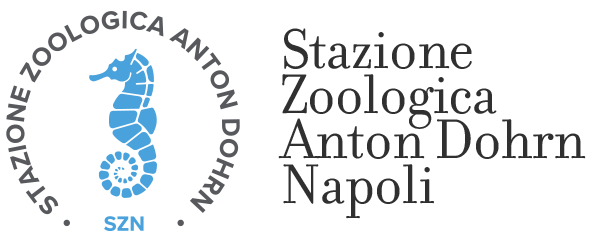Code: 04894530635
The Stazione Zoologica Anton Dohrn of Napoli, founded in 1872, is a public Research institution entirely dedicate to scientific research. Here more than 20 Nobel Laureates have worked and made scientific progresses that contributed to the wellbeing of humanity.
In our Research Institution, marine animals and their habitat are studied and protected. The monitoring of the Mediterranean coasts and seabed is carried out with the most updated technical scientific equipment and the researches cover some of the most advanced sectors of biology.
Giving your 5 x 1000 to the Stazione Zoologica costs nothing, is simple and is upon your choice, it is an opportunity to support the non-profit organizations, such as the Zoological Station.
The 5 x 1000 at the Stazione Zoological will be entirely dedicated to protect the marine life and support the research of young scientists.
If Environment is important for you, please help us to learn more about our seas with your contribution: to protect our environment, we first need to understand it!
How to donate:
To donate your 5 x 1000 to the Stazione Zoologica, just sign and write the fiscal code of the Stazione Zoologica Anton Dohrn, in your tax declaration.
Fiscal Code: 04894530635
The European Marine Biological Resource Centre
In short: the European Marine Biological Resource Centre (EMBRC) is a Distributed Research Infrastructure providing services to support research on marine biological resources. Its end users are researchers and technological engineers from academia, universities, and from the private sector.
The European Marine Biological Resource Centre (EMBRC) is a distributed Research Infrastructure (RI) composed of marine biological stations and institutes across the European Research Area (ERA). Teams of scientists in EMBRC engage in interdisciplinary research and technological development in marine biology and ecology. The RI is equipped with state-of-the-art research platforms and instruments organized into scientific services. External users from academia and industry can access this stimulating scientific ecosystem to pursue fundamental and applied research on marine bioresources. In particular, EMBRC aims to drive forward the development of blue biotechnologies.
The distributed nature of EMBRC enables it to provide access to the entire marine biodiversity along the European coast, far beyond what each station in isolation can offer. Each of the stations specializes in particular sets of model species, permitting EMBRC as a whole to offer a broad array of models for innovative scientific and technological applications. EMBRC gives its users unprecedented access not only to its interconnected research infrastructure but also to its background knowledge and expertise, thereby greatly facilitating the research endeavors of its external users. The integration of resources and knowledge on such a large scale over the decades to come will enhance the efficiency of training, knowledge transfer, international collaboration and EU global positioning in marine biological sciences. It will foster the development of key enabling technologies, in particular blue biotechnologies. Developments in these fields will, in their turn, stimulate blue growth, economic development and human wellbeing across the ERA. In conclusion, the RI will have an enormous potential in fostering research, education and innovation in marine biology. It will contribute to creation of excellence needed to achieve the goals established in the "Europe 2020 Strategy" and the "2010 ESFRI Roadmap".
EMBRC constitutes one of thirteen Research Infrastructures (RI) on the Biological and Medical Sciences (BMS) group and it forms a bridge towards the Environmental Sciences RIs.
EMBRC obtained three years funding from the European Commission to prepare itself. At the close of this preparatory phase, January 2014, an EMBRC Business Plan and a ready-to-sign Memorandum of Understanding was delivered, inviting countries to express their willingness to set up the EMBRC as a European Research Infrastructure Consortium (ERIC). The signatories, France, Norway, the UK, Belgium, Spain, Portugal, Italy, Greece and Israel, established an EMBRC Implementation Board with the overarching tasks to set up EMBRC and apply for the ERIC status. The Board appointed a General Director, which has commenced her work for EMBRC. France was selected by the partners to host the statutory seat and therefore, the EMBRC core office is located at the UPMC in Paris. Each of the signatory countries has established a national node staffed by a node director and a liaison officer to guarantee optimal collaboration with the core office.
Central Core Office: UPMC, Paris, France
Executive Director: Nicolas Pade
Web: www.EMBRC.eu
Head Quarter secretariat: This email address is being protected from spambots. You need JavaScript enabled to view it. - This email address is being protected from spambots. You need JavaScript enabled to view it.
Supervisor: Dr. Giovanna Romano
Scientific activities
The Laboratory of Chemical Ecology offers instrumentation and support to conduct studies of Chemical Ecology on the marine plankton. The research activities carried out in the laboratory are focused in particular on the study of the effects that secondary metabolites produced by diatoms induce in planktonic organisms and in marine model organisms such as sea urchins. The laboratory is also equipped for the extraction and the first fractionation of bioactive compounds and for the study of their biological activity.
Experimental systems
- Rotating wheel for copepod rearing and experimentation.
- Thermostated chamber for microalgae cultivation and incubation of copepods in controlled conditions.
- Basic facility for microalgae cultivation.
Analysis
- Sorting, isolation and identification of live phytoplankton and zooplankton species from natural samples.
- Determination of ingestion and reproduction rates of marine organisms.
- Biological assays to test diatoms and their metabolites using copepods and sea urchins.
- Analysis of assay results by light microscopy.
- Culturing of microalgae in different media.
- Preparation of algal pellet by centrifugation.
- Extraction and first fractionation of secondary metabolites from algal pellets.
- Biochemical and colorimentric assay to study the metabolism of oxylipins in diatoms.
Equipments
- Chemical hood (total expulsion).
- Stereo-microscopes.
- Upright and inverted microscopes.
- Fluorescence microscope equipped with a PC and video camera.
- Benchtop refrigerated centrifuges.
- Rotavapor.
- Spectrophotometer.
- Sonicator.
- Ph meter.
- Oxygraph.
- Recirculating water bath.
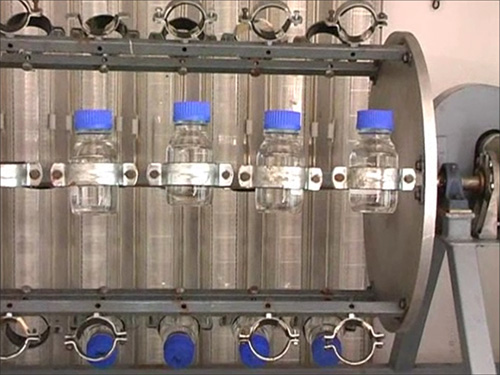
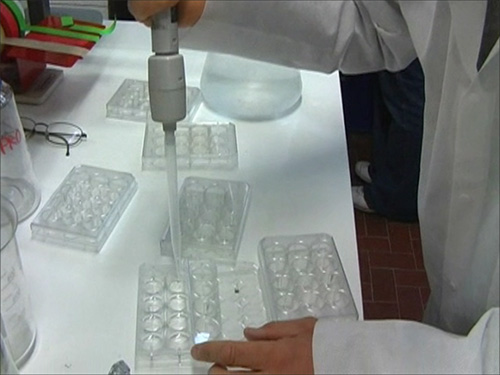
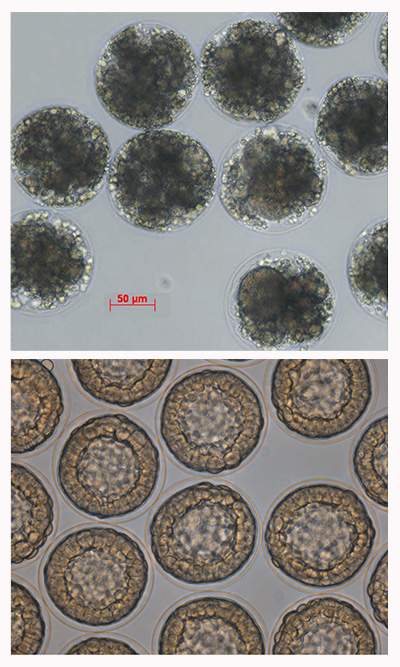
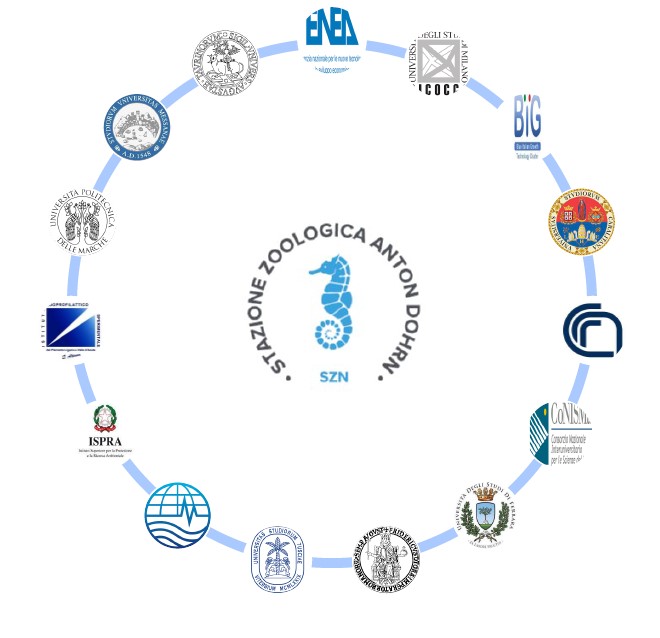
The Italian Node of the European Marine Biological Resource Centre (EMBRC-IT) was constituted on 05/10/2021 as a JRU (Joint Research Unit), including a total of 16 partners (SZN, CONISMA, CNR, OGS, CTN-BIG, IZSPLV, ENEA, ISPRA, UNITUS, UNICA, UNIFE, UNIME UNIMIB UNINA UNITO, UNIVPM) with SZN as its coordinator and representative institute in EMBRC-ERIC.
The Italian JRU was established according to the principles of complementarity and synergy of the partners regarding the development of new collaborative research projects and research services and in order to strengthen scientific research and foster human and infrastructure resources exchange in the field of blue growth.
The JRU agreement has set itself the following objectives:
Strategic Agenda
• Valorisation of the resources and skills of each of the Parties through their coordinated organization and best practices sharing;
• Coordination of national activities within EMBRC–ERIC and provide support to the MUR and other Ministries in organizing the Italian membership in EMBRC–ERIC and in defining strategic research agendas and roadmaps related to sustainable blue growth;
• Strengthening of Italian scientific research in the field of marine biology and promote training, scientific dissemination and communication in this area;
• Promotion of technology transfer and new relationships with national companies;
• Design and organization of pilot actions and projects, demonstrating the peculiarity and value of the Italian contribution to EMBRC–ERIC;
• Conduction of joint activities aimed at consolidating, strengthening and expanding the EMBRC-ERIC Research Infrastructure and its impact in terms of science and innovation, with particular attention to the spill overs at the national level, also by participating jointly or individually in funding programs of the Research.
Public-public and public-private collaborations
• Coordination of an up-to-date National Index of scientific services for the «blue» community
• National services catalogue opened to EU Projects and Transnational Accesses
• Single access point: marketing at national and EU level
• Support to efficient and coordinated technology transfer
• Shared management of orders via the Node capacity
• Improved opportunity for scientific interactions, co-authorship and for interdisciplinary collaborations
• Favourable access conditions for associate partner
Improved fundraising capacity
• HE: Participation in EU projects as individual members of EMBRC-IT that can involve the other members of the JRU and EMBRC-IT itself as Affiliated Entity
• PNRR (NextGenerationEU): Strengthening and improvement of operative units (OU) of EMBRC-IT partners
• H2020: Access to EU-IR grants
• PON 2007-2013: Action on «Potenziamento strutturale»
• POR 2014-20: Action on «access to H2020 EU projects»
EMBRC-IT Partners
• Stazione Zoologica di Napoli Anton Dohrn (SZN) – Italian Node Coordinator
• Cluster Tecnologico Nazionale “Blue Italian Growth”(CTN-BIG)
• Consorzio Interuniversitario per le Scienze del Mare (CoNISMa)
• Istituto Nazionale di Oceanografia e Geofisica Sperimentale (OGS)
• Istituto Zooprofilattico Sperimentale di Piemonte, Liguria e Valle d’Aosta (IZSPLV)
• Università di Cagliari (UNICA)
• Università di Ferrara (UNIFE)
• Università di Messina (UNIME)
• Università di Milano-Bicocca (UNIMIB)
• Università di Napoli Federico II (UNINA)
• Università di Torino (UNITO)
• Università della Tuscia (UNITUS)
• Università Politecnica delle Marche (UNIVPM)
• Istituto Superiore per la Protezione e la Ricerca Ambientale (ISPRA)
• Consiglio Nazionale delle Ricerche (CNR)
• Agenzia nazionale per le nuove tecnologie, l’energia e lo sviluppo economico sostenibile (ENEA)
Summary
EMBRC-IT will offer opportunities for the Italian marine research and technological development community at large because:
• The JRU supports and reinforces the cohesion of the Italian Marine Research Community,
• It fosters a higher visibility of this community at the National (MIUR) and International (EU) level,
• It links marine biological resources to innovation, supporting cooperation with universities, research organizations and industries
• It creates critical mass, capable to interact with, and advise, policy makers
The result of its common effort will be more than the sum of the capacity of each.
Contact information
Node Director: Donatella de Pascale
Liaison Officer: Pasquale De Luca
JRU Manager: Giorgio Maria Vingiani
